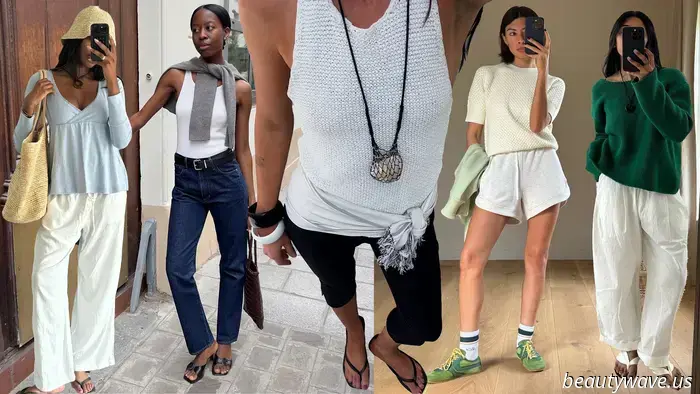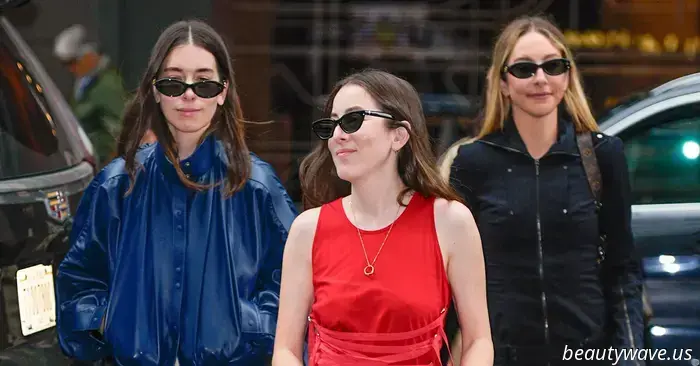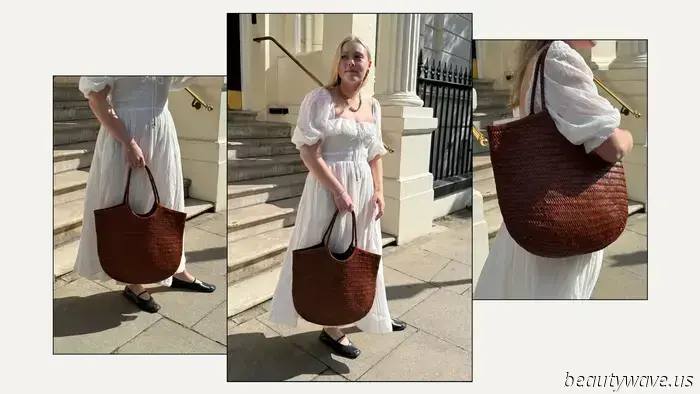
Lasers, Aligners, and Zoom: Svetlana Polyakova on the Miracles of Modern Dentistry
Holder of a Doctor of Medical Sciences degree, practicing dentist, and chief physician of the Medkлассик+ clinic, Svetlana Polyakova confidently keeps up with progress—and even leads it. Polyakova was among the first to introduce laser and 3D technologies into dentistry, and today she confidently states: "Patients no longer fear the dentist. They know that modern technologies work quickly, accurately, and almost painlessly."
We spoke with Svetlana Vladimirovna about how dentistry has changed over the past 10 years, what patients are most concerned about (spoiler: food), how aligners differ from braces, and why veneers are not scary. The conversation turned out to be not only professional but also genuinely lively.
How has dentistry changed in the last 10 years?
Over the past decade, dentistry has undergone a real revolution. Whereas laser technologies used to be rare—I’ve been working with lasers for over 20 years and was one of the first to implement them in Russia—they are now standard tools in most clinics.
But the major breakthrough is 3D technology. It completely changed our approach to diagnosis and treatment. We can see every tooth in minute detail, plan surgeries in advance, and show patients the results even before starting treatment. This is not just a beautiful image—it's precision previously unavailable.
Many new techniques have emerged, materials have become more durable and aesthetic. What once seemed fantastic has become everyday reality.
What questions do patients most often ask?
There’s one question everyone asks—"When can I eat?" About 90% of patients ask this, which is understandable: food is a basic need, and people are concerned about how procedures will affect their usual rhythm of life.
Of course, patients are also interested in treatment timelines: when crowns will be ready, when they can remove braces or receive ready-made aligners. But the first question remains about food.
The good news is that modern technology allows us to significantly reduce restrictions. Previously, after certain procedures, patients had to wait hours; now, thanks to quality temporary structures, they can return to normal eating almost immediately or within half an hour at most. I hope soon this question will become less relevant.
What is the difference between aligners and braces?
The difference is truly significant and affects almost every aspect of treatment.
Braces are a fixed structure that the patient cannot remove on their own. On one hand, this guarantees that treatment proceeds according to plan—we install the braces and are sure the patient wears them constantly. But on the other hand, it creates many restrictions: no hard foods, nuts, apples; caution with drinks. After each meal, thorough cleaning is required—otherwise, food debris can get stuck in the system.
Aligners follow a completely different philosophy. Imagine thin, transparent plates no thicker than 0.7 mm, printed on a 3D printer specifically for your teeth. They are almost invisible to others, can be removed during meals and brushing. The patient wears them for 22 hours a day and lives fully the rest of the time.
Previously, aligners had to be ordered abroad—involving complex logistics. Now, they are produced right here, using the most modern Swiss and German equipment. This has made treatment much more affordable and faster.
The only limitation is in very complex cases, around 10%—aligners might not suffice. But these are really rare, atypical cases.
Is it true that aligners are less effective than braces?
I absolutely disagree with that statement. Over years of working with aligners, I’ve never had a case where they proved ineffective.
Yes, there are those 10% of complex patients needing surgical intervention—but these are exceptional cases, probably one patient per year. For everyone else, aligners work perfectly.
Moreover, patients often are so satisfied with the results that they request to extend the treatment! Each plan includes several free refinements if needed. Sometimes patients say, “Let’s order another correction,” but I reply, “You already don’t need it; the result is excellent.”
The thing is, transparent aligners create a special effect—teeth look whiter, shinier, larger. Many want to preserve this beautiful effect longer. Imagine—patients don’t want to finish treatment! This is the best indicator of the technique’s efficacy and comfort.
How long does aligner treatment typically last?
It depends on each clinical situation, as every patient has their own characteristics. On average, treatment takes from one to a year and a half. In rare, particularly complex cases, it can take up to two years, but these are truly exceptional.
It’s important to understand that aligners work gradually and gently—they smoothly move teeth into the desired position without damaging roots or surrounding tissues. Therefore, treatment time may seem long, but the results are worth it.
How often can teeth be whitened?
This depends on the type of whitening. At-home whitening—strips, trays with gel for nighttime or daytime use—can be done every 2-3 months without any issues.
In-office whitening procedures—such as 3LT or Zoom 4 systems—can be performed every six months, and this is perfectly safe for the enamel.
Whitening systems appeared on our market about 20 years ago, and I was among the first five doctors to start working with the Zoom system. At that time, I asked representatives of the American company how often patients could whiten: they simply replied, “If the patient is willing to pay, every month if they want.” The only limit is financial, not medical.
With each whitening session, teeth become even whiter, so some patients aim for the brightest shade possible. I remember a patient who whitened her teeth three times in two months at the early stage of my practice and felt great.
Modern methods have become even more comfortable. The same Zoom 4 includes a cooling system, which almost eliminates tooth sensitivity. The procedure is easy and comfortable to bear.
Which veneers look most natural?
There are two main types of veneers: composite and ceramic. Composite veneers are made directly in the clinic from filling material—they are also called artistic restorations. They can quickly change the appearance of the smile zone, but there are nuances.
For example: a porcelain cup and a plastic cup—tea and coffee stains from the porcelain wash off easily, but from plastic, much harder. Veneers are the same story.
Ceramic veneers are a completely different level of aesthetics. They are made from zirconia and feldspathic ceramic. These veneers transmit light just like natural enamel, making them look as natural as possible. We also work with Luminers veneers, produced in the USA—they also deliver stunning results.
We also make composite veneers, but I always honestly tell patients: this results in less aesthetic outcomes compared to ceramics.
Is it possible to see how teeth with veneers will look in advance?
Absolutely! We never work blindly. First, we create a computer model—you can see your future smile on the screen.
There’s an even more interesting stage—wax-up. We ask the lab to make a wax model of the future veneers, then produce temporary plastic overlays. The patient can try them on, wear them for a while, look at themselves in the mirror, take selfies.
This step is crucial because it allows adjusting the shape, length, and proportions of the teeth. The patient chooses how their teeth will look, and only after their approval do we proceed to produce the permanent veneers. No surprises—the final result will be exactly what you saw and approved.
Is it painful? Is anesthesia used?
Some patients can indeed do without anesthesia, but we always prioritize comfort. We definitely use local infiltration anesthesia—it’s mild, quick-acting, and the patient feels relaxed.
Our clinic uses computerized anesthesia. This modern technology makes the injection almost painless. The anesthesia wears off quickly, but it provides excellent conditions for the dentist to work, and the patient remains fully relaxed.
Our goal is for a visit to the dentist to be a pleasurable experience, not stressful. Modern anesthesia methods make this entirely possible.
How long does the installation take, and how many visits are needed?
The process usually involves five visits, each with its own purpose.
The first visit is consultation. We discuss your wishes, the color and shape of future teeth, and plan the result.
The second visit is preparing the teeth for veneers—actual treatment in the clinic.
The third visit is fitting. Remember those temporary plastic overlays? Here, you try them on and make final decisions about the shape and size.
The fourth visit is the placement of the finished veneers—this is the most exciting moment, seeing the final result.
The fifth visit is a follow-up. I invite patients after a week or ten days to ensure everything feels comfortable and suitable. Any adjustments needed are done immediately.
This approach ensures an ideal result and avoids unpleasant surprises.

Other articles
 To be honest, these 7 summer shoe trends seem somewhat outdated.
However, these seven styles seem distinctly 2025.
To be honest, these 7 summer shoe trends seem somewhat outdated.
However, these seven styles seem distinctly 2025.
 This Is the Most Stylish Monochromatic Outfit to Choose Instead of All-Black Attire This Summer.
Wearing all black doesn't equate to being chic, and Jessica Alba is ready to demonstrate that. I foresee this color trend for summer outfits becoming popular. Find the collection here.
This Is the Most Stylish Monochromatic Outfit to Choose Instead of All-Black Attire This Summer.
Wearing all black doesn't equate to being chic, and Jessica Alba is ready to demonstrate that. I foresee this color trend for summer outfits becoming popular. Find the collection here.
 The Extremely Niche Denim Trend That Took Me by Surprise
Danielle Haim is an admirer.
The Extremely Niche Denim Trend That Took Me by Surprise
Danielle Haim is an admirer.
 I've waited for months for this summer bag that looks designer to be restocked—it's finally back!
However, it won't last long.
I've waited for months for this summer bag that looks designer to be restocked—it's finally back!
However, it won't last long.
 For your information: Fashion experts are currently pairing *this* beautiful dress trend with flats.
Olivia Rodrigo recently sported the top dress trend to wear with flats this summer. Check it out and shop it here.
For your information: Fashion experts are currently pairing *this* beautiful dress trend with flats.
Olivia Rodrigo recently sported the top dress trend to wear with flats this summer. Check it out and shop it here.
Lasers, Aligners, and Zoom: Svetlana Polyakova on the Miracles of Modern Dentistry
Candidate of Medical Sciences, practicing dentist, and chief physician of Medklassik+ clinic, Svetlana Polyakova, confidently keeps pace with progress – and even outpaces it. Polyakova was one of the first to use laser and 3D technologies in dentistry, and today she confidently states: "Patients no longer fear the dentist. They know that modern technologies operate quickly, accurately, and almost..."
